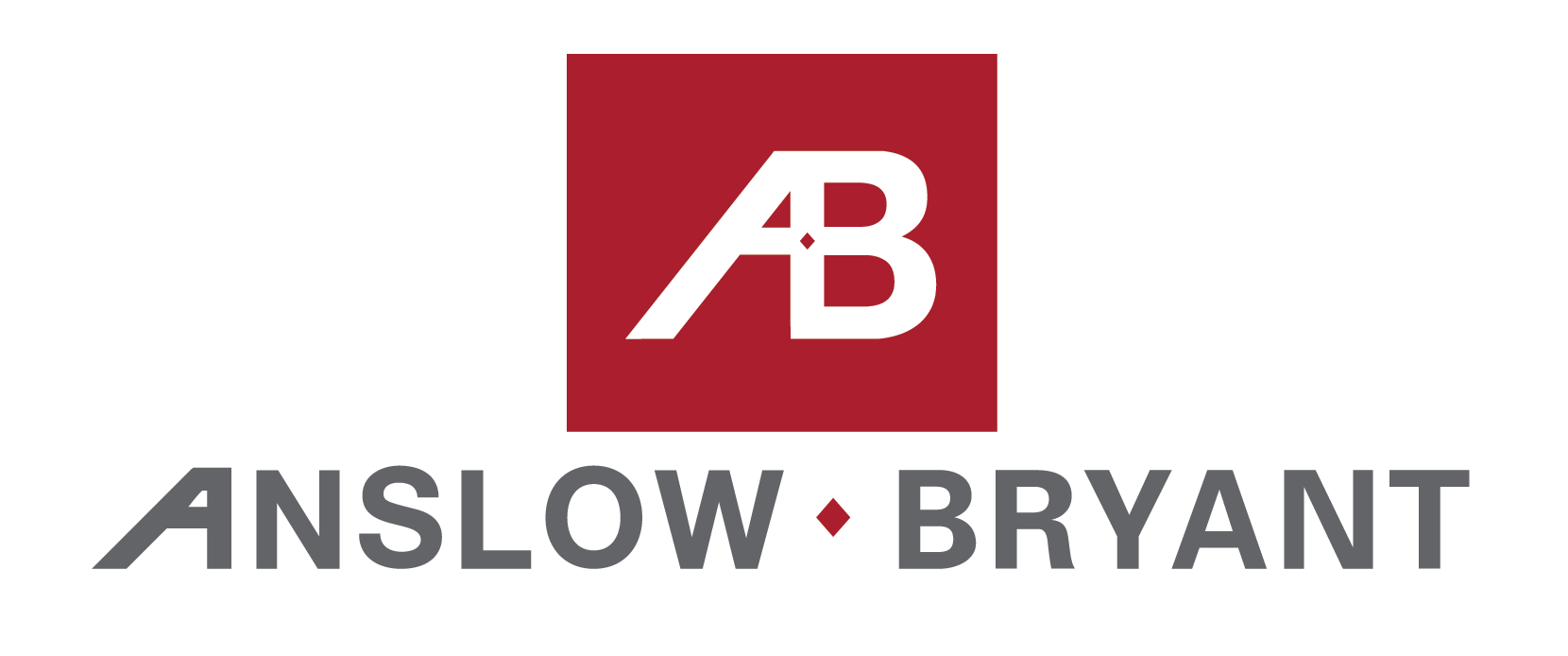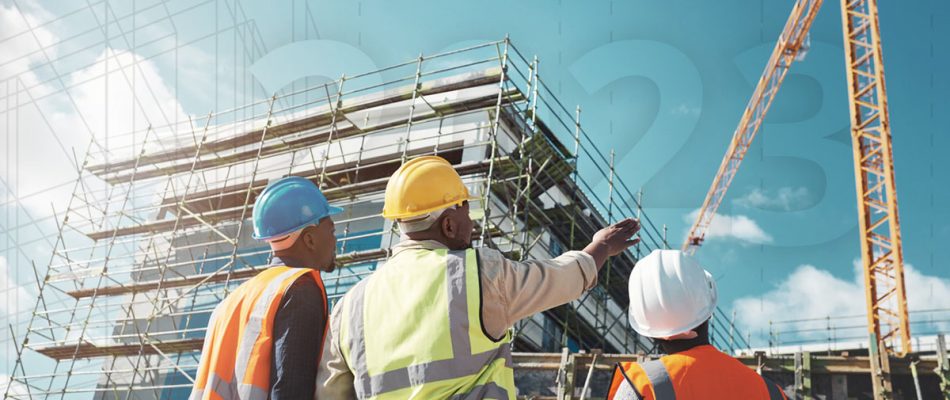2023 Construction Trends to Watch For
The construction industry has experienced significant changes after the COVID-19 pandemic and innovations in construction technology. Many factors influence these companies’ ability to complete projects on time and keep up with increasing demand, such as labor and material shortages, inflation, transportation delays and supply chain challenges.
The United States commercial construction forecast shows that some of these issues will persist in 2023. However, the industry has plenty of hope, especially as technology progresses to address these challenges. Continue reading to learn more about the commercial construction trends in 2023.
Continued Labor Shortage
Notable construction industry trends include the looming labor shortages carrying over from 2022. Labor shortages in the construction industry aren’t anything new, especially throughout the pandemic. However, federal spending, inflation, consistent shortages and an aging workforce drive challenging labor shortages.
Despite low unemployment rates, many job positions are left open, and contractors cannot fill as many jobs as they want. Rising construction wages are also affecting the ability of commercial building contractors to hire new talent. As a result, many construction companies have to raise their wages to attract new workers, which can affect their bottom line during the current challenges within the supply chain and high material costs.
The lack of available workers makes it challenging to keep up with demand and complete projects on schedule. Construction companies who are looking to hire new workers will need to offer more opportunities and incentives to attract workers, including:
- Training programs for high school students and graduates.
- Performance incentives.
- Competitive wages.
- Expanded recruitment efforts.
Construction companies should also consider implementing automation and new technology to help supplement the workforce, taking over jobs that can be dangerous or hazardous to workers. While these changes won’t replace workers, they’ll create new jobs that can open up your job search opportunities to individuals with different skills in automation and technology, allowing them to supervise and program the latest machinery. Automation and technology can also help lighten the workload for construction workers, helping streamline processes and make it easier to keep up with demand during these labor shortages.
Supply Chain Woes
The COVID-19 pandemic started turbulent supply chain challenges with transportation delays and entire countries shutting down their ports and airfare. Even though we’re beginning to emerge from the pandemic and many countries are slowly returning to normal, the supply chain is still experiencing disruption, and it’s expected to continue well into 2023 and beyond.
Various factors are affecting the supply chain in 2023, including:
- Transportation costs: Rising fuel prices have affected transportation costs, making it more challenging for construction companies to afford transportation as they did before the pandemic. Fuel prices are expected to stabilize in 2023, which will help stabilize transportation in the construction industry. However, transporting may still be challenging due to driver shortages, especially for construction worksites in more remote parts of the U.S.
- Labor shortages: Labor shortages affect construction companies’ ability to meet demand. Labor shortages are also affecting global availability and material costs. For example, a manufacturer may have materials but lack labor to process and transport them to construction companies. As a result, companies are becoming more selective when choosing projects.
- World events: Specific world events, such as the war between Russia and Ukraine, can cause problems with the supply chain. The war between these two countries makes it more challenging to obtain metals and raw materials as they’re both significant exporters to the rest of the world. As the war continues, the construction industry can expect more shortages and price increases from specific commodities exported from Russia and Ukraine.
- Weather events: Catastrophic weather events, such as floods, hurricanes and blizzards, can cause significant disruptions to the supply chain. For example, Hurricane Ian hit Florida in September of 2022 and devastated many parts of the state, causing shortages and price increases regarding drywall, timber, roofing insulation and other materials. It can be challenging to predict weather events, so it’s always something construction companies should consider each year.
- Alternative material use: Many construction companies turned to alternative materials when steel and other critical construction products fell in short supply. Using these alternatives caused additional supply chain challenges since it increased demand for these materials, which stressed manufacturers. Suppliers who weren’t ready for the increase in demand experienced shortages like many others.
Material Costs Continue to Rise
Due to problems within the supply chain, material costs will continue to rise in 2023. Material shortages are increasing demand, leaving many construction companies and project owners struggling to find the materials they need to complete their work. Most construction companies are experiencing shortages of at least one type of material. These shortages bring higher prices, which creates additional concern for construction companies as they have to rework their budget to account for these shortages on top of increasing wages and rising transportation costs.
Some building materials that are currently experiencing shortages or increases in prices include:
- Asphalt and concrete
- Paint materials
- Plastics and resins
- Rubber
- Lumber and wood products
- Millwork
- Metals
- Hardware
- Appliances
- Electrical switchgear
- HVAC equipment
These shortages affect construction companies’ ability to complete projects and equip their equipment with the proper components, such as tires and repair materials. Rising prices make it challenging for construction firms to turn over a profit, despite the increased demand for construction products. Many construction companies are looking for alternative materials or suppliers to meet their needs, contributing to shortages in other sectors that were unprepared for the influx of orders for alternative materials.
Inflation is also contributing to rising material costs. Many people and companies in the United States expect increasing rates for all goods and services in 2023, which will also affect the construction industry. As a result, materials will become even more challenging to obtain, affecting project completion rates and construction companies’ bottom lines.
Green Building
The construction industry plays a significant role in fossil fuel emissions and climate change, so green building is becoming more popular with homeowners, renters and commercial tenants. Green building refers to building environmentally sustainable buildings utilizing sustainable design and construction.
Construction industry professionals have much to gain by investing in green building practices, particularly as more consumers increase their demand for environmentally-friendly building materials and practices. As a result, sustainability will be something construction companies can aim for in 2023. Construction leaders are looking for ways to reduce demolition waste and switch to sustainable building materials. Construction companies are also looking for locally-sourced building materials to help reduce transportation costs and emissions.
More construction clients are investing in companies that offer environmentally friendly and sustainable practices, making green buildings a worthy investment from 2023 forward. Green building practices help contribute to a cleaner environment by reducing energy usage, material consumption and transportation. Everyone involved can benefit from green building, and as more people become eco-conscious, clients prioritize sustainable construction companies.
Another popular green building opportunity for construction companies is green scapes. Greenscapes are natural landscapes on top of buildings, which are increasing in popularity in urban environments. Buildings with green scapes are often constructed horizontally rather than vertically to increase the available space. This type of green building helps add more natural landscapes to urban areas.
Smart Cities
Many homeowners and companies are installing smart devices in their homes or businesses, which help them find information quickly, clean efficiently and improve productivity. While these innovations are limited to homes or businesses, more entities are looking to expand these smart devices to cities, making them more innovative and efficient for the general public.
Smart cities aim to improve citizens’ livelihood and the area’s safety. Construction companies also have exciting opportunities to push the boundaries in their work and take part in progressing the future. When planned and designed correctly, smart cities can help promote continuous improvement. These cities collect real-time data and combine it with historical data to optimize decision-making. This data could help prevent traffic accidents or jams, promote sustainable development and keep citizens safer.
Smart cities are a significant investment, with some of the biggest projects costing over $100 billion. However, the entities financing these projects believe they’ll promote long-term progressive societal changes.
Living Building Material
One of the most popular new trends in the construction industry is using living building materials. While this industry trend is still relatively new, there are signs that there will be more adoption of the trend, especially since the movement has experienced 300% growth in the last 10 years. Considering how many emissions the construction industry is responsible for, it makes sense that more construction companies are transitioning to utilizing living building materials.
Living building materials refer to construction materials designed to behave or resemble a living organism. Some examples of living building materials include:
- Self-replicating concrete
- Self-mending biocement
- Mycelium-based composites
Many of these materials are created using biological materials rather than non-renewable materials. The manufacturing process can also absorb carbon emissions rather than release them. Since the number of new buildings and structures isn’t expected to slow anytime soon, you can expect more construction companies to utilize living building materials in their projects, especially as more consumers become eco-conscious in the wake of climate change.
Technology and Digitization
More construction companies are utilizing technology and digitization to make their processes more efficient and improve workers’ safety and productivity. Some construction companies are automating some of their processes, while others are using technology to supplement their work and assist their workers. Some examples of technology used in construction include:
- Virtual design and construction: Virtual design and construction allow construction companies and clients to view a space before construction begins. These programs make it easier for designers and architects to envision a space before starting construction. You can even get accurate measurements without visiting the work site, speeding along processes and making it easier to stay on schedule. These programs also make it easier for clients to see a space before deciding to move forward with a project, allowing them to make necessary changes before construction begins.
- Drone technology: More construction companies are starting to utilize drones to collect real-time data that can help catch problems before they affect the scheduling and cost of a project and track the progress of a project. Drones also help construction companies spend less time mapping a worksite, which makes it easier to plan, design and keep projects on schedule.
- Robotics: The construction industry significantly contributes to waste, so many companies turn to robots. Robotics can also help develop smart cities while improving worker safety, productivity, efficiency and quality. One of the main reasons construction companies are turning to robots is to improve accuracy and save time, helping speed up projects that are experiencing delays from labor and material shortages.
- Data automation AI: To keep up with our society’s ever-growing desire for data, we’ll likely see more automation software to manage it. As opposed to requiring a specific person or persons to handle it, AI can take care of the data for efficiency and accuracy purposes. For instance, you might use software to more accurately track the progress of a construction project. This will be a huge step forward to help businesses manage a vast amount of data on large projects, saving time and money in the process.
Emphasis on Quality
Prior to 2023, the construction industry was primarily focused on getting the job done as efficiently and cheaply as possible. Today, we will likely see a huge shift toward quality over quantity. Owners are willing to pay more for better-quality assets since they understand the value they get over the course of the lifecycle of that asset. If you can build it right the first time, you’ll see a rise in quality and productivity while saving time and money and reducing onsite waste.
Paying closer attention to quality materials and creative hiring campaigns will also help owners get the best value out of their materials amidst rising costs and a labor shortage. We’ll notice companies spending a little more on necessities in the beginning to increase their bottom line. For instance, construction companies might get support from staffing agencies that can pre-screen candidates across several different roles. That way, they have a higher chance of finding the right fit for their specific needs.
Quality in construction matters for each step of the process. You’ll need a quality site to build a quality foundation, and so on. As a result, when hiring a construction company, it’s crucial that you find one that prides itself on quality. You’ll also want to communicate well with contractors, sitting down to collaborate on possible solutions about what’s working and what’s not. Putting more investment upfront and working with a reputable company will ensure a better quality project delivery.
Partner With Us
With these commercial construction trends in mind, working with a construction company you can trust and who keeps up with these trends to continually improve their performance is essential. Anslow-Bryant is here to help.
We are a commercial construction company that prides ourselves on our quality, ensuring your project is successful and helps you save long-term. We aim to satisfy our clients and bring our values to each job site so we can exceed your expectations. Some of our services include pre-construction, lean construction, building information modeling (BIM), and mobile technology. Contact us today to learn more about how you can partner with us.





